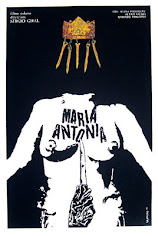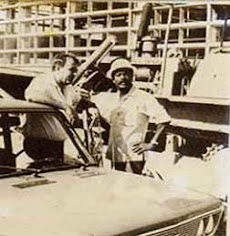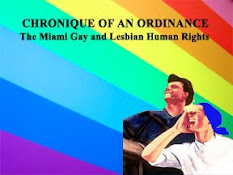By Sergio Giral
Over the last decades Hispanic immigration have caused a major shift in the demographic complexion of United State. In Miami-Dade County, this complexion is over 70% Hispanic -- with immigrants of Cuban descent making up the largest demographic, while an influx of Central and South Americans is both expanding and fragmenting the composition of Hispanics in the country. There is a growing group of Hispanics who have also played a significant role in this complexion – the Black Cubans – who has gone largely unnoticed, not only to White and Black Americans, but also to Hispanic Americans whose own social structure historically has alienated them as a result of race.
Popular culture may provide some insight, especially if we examine television – the epitome of an American popular culture. It is elementary to acknowledge that television’s publicity spots and commercials are targeted to attract consumers. And soap operas pursue ratings to accomplish sponsors investment, yet Latino TV producers avoid the Black subject, mimicking Hollywood on the 50’s when film studios cast Gina Lollobrigida, an Italian actress to play Queen of Sheba on Salomon and Sheba or in Veracruz, where Sara Montiel, an Spaniard actress, plays the role of an American Native character, the possible closer look alike to an average American spectator. This schematic tradition survive on the Latino media and suppresses the possibility of a love story where both characters are Black, a sitcom like “The Cosby Show”, “Meet the Browns” or a talk show led by a Latino Black anchor such as Wendy Williams, Tyra or Oprah in the American TV network, or a Tyler Perry’s film For Colored Girls.
Rosario Isabel Dawson
Just to cite few examples, Rosario Isabel Dawson, a Black, Puerto Rican, Irish, Cuban and Native American actress, singer, and writer. She has appeared in American TV series as Cin City and films such as Kids, Men in Black II, 25th Hour, Sin City, Clerks II, Rent, Death Proof, The Rundown, Eagle Eye, Alexander, Seven Pounds, Percy Jackson and the Olympians: The Lightning Thief, and Unstoppable. While in the Latino soap operas Black and Native Latin American characters are reserved for maids, chauffeurs, with some exeptions, like Elvira Valdés, a succesful Cuban-Bulgarian actress who has appeared on Cuban and Venezuelan films and miniseries such as Móvil Pasional, Me alquilo para soñar, Inspiration, Cartas del parque, Barroco, Demasiado miedo a la vida , On the Aire, and her latest Cuban-American film, Dos Veces Ana, where she plays the main role.
Elvira Valdés.
For a better understanding of this racial social structure, it is necessary to trace the history of Black Cubans from the days of the African slave trade to Cuba. It is estimated that the number of slaves landing alive in Cuba over the whole period (1521-1870s) was over a million, almost one tenth of all slaves in the Americas. They were brought mostly in the 1800s. According to 1827 Census the Black and mulatto slaves and free came to compose approximately 60 % of the population while Whites, mostly from Spanish descendant a 40%. When Cubans began the Independence War against Spain, Black Cubans - free or slaves - strongly supported the revolt. And played a recognized role in the struggle for independence in a truly multiracial term. The Cuban cigar workers, who arrived in Tampa from Key West in 1886, are an example of this historical continuity. About 15% of the Cuban population of Ybor City and West Tampa would be Black Cubans. During his stay in Ybor City, Jose Marti declared the necessity of a united front beyond racial differences to liberate Cuba from the colonial Spanish dominium, declaring that being Cuban was "more than white, more than black”. This Cuban historical axiom repeals the USA modern classification of Afro-American for black descendants and much more for black Cubans.
After Fidel Castro’s victory in late 1958, Cubans living under a totalitarian regime have to survive according to what restrictions imposed the State, consider well the Black population. The first Cuban leap to Miami was wealthy and well-educated white elite who spoke English and slipped easily into South Florida, where topographical, cultural and language similarities afforded them the easiest opportunity for assimilation into U.S. society. Assimilation, however, proved more difficult to obtain for Black and mestizo Cubans, especially in the traditional, racial social structure of South Florida. However, by 1965, the United States’ history of slavery, segregation and racism was superseded to by the achievements of its Civil Rights Movement. As a result, the potential for racial equality in the United States soon became a contributing factor in many Black Cubans’ decision to immigrate to the United States. To this end, many Black Cubans migrated to cities, like New York, where other Black Latinos groups had established a large and important presence.
Due to today’s increasing of Blacks and mulattos in Cuba which possible could be compared to the 1836 Census, it’s difficult to assess the impact and role of Black Cubans in Miami Dade and South Florida from days of slavery to their significance in contemporary American society. Today seems hard to accomplish and to fill a void in the recording and reporting of the Black Cuban experience as represented in both U.S. Census data and American popular culture, since Census data fails to accurately report upon them, allowing choosing more than one race, but limited the reporting of them as just “Hispanic.” Without specific data on Cubans of African descendants, it seems that the only way to assess the role, which this invisible group of Hispanics plays in our society today is left to our own daily experience be the judge.


















No comments:
Post a Comment